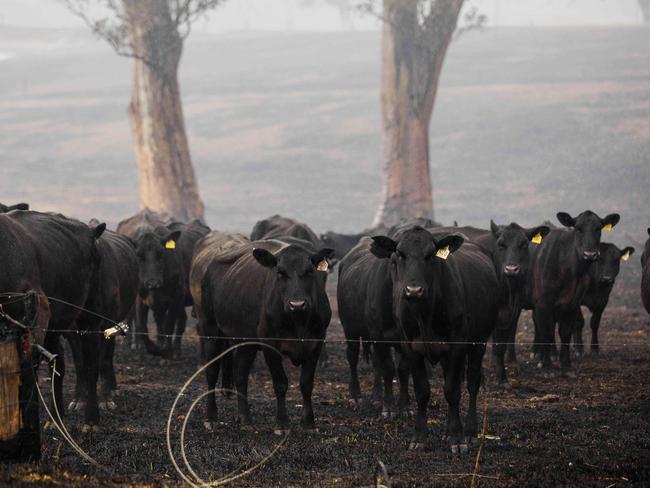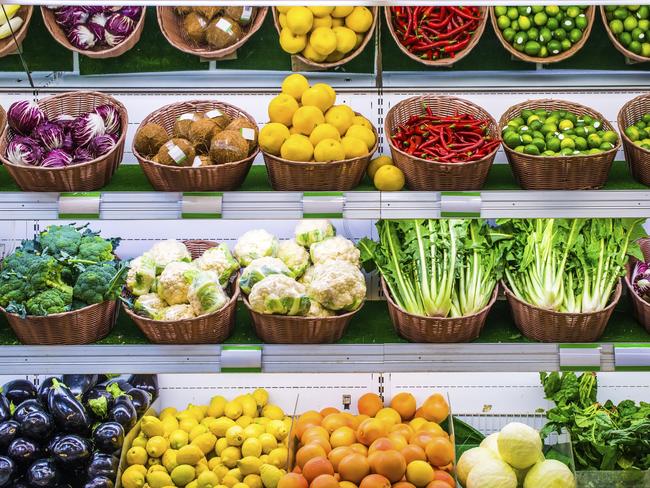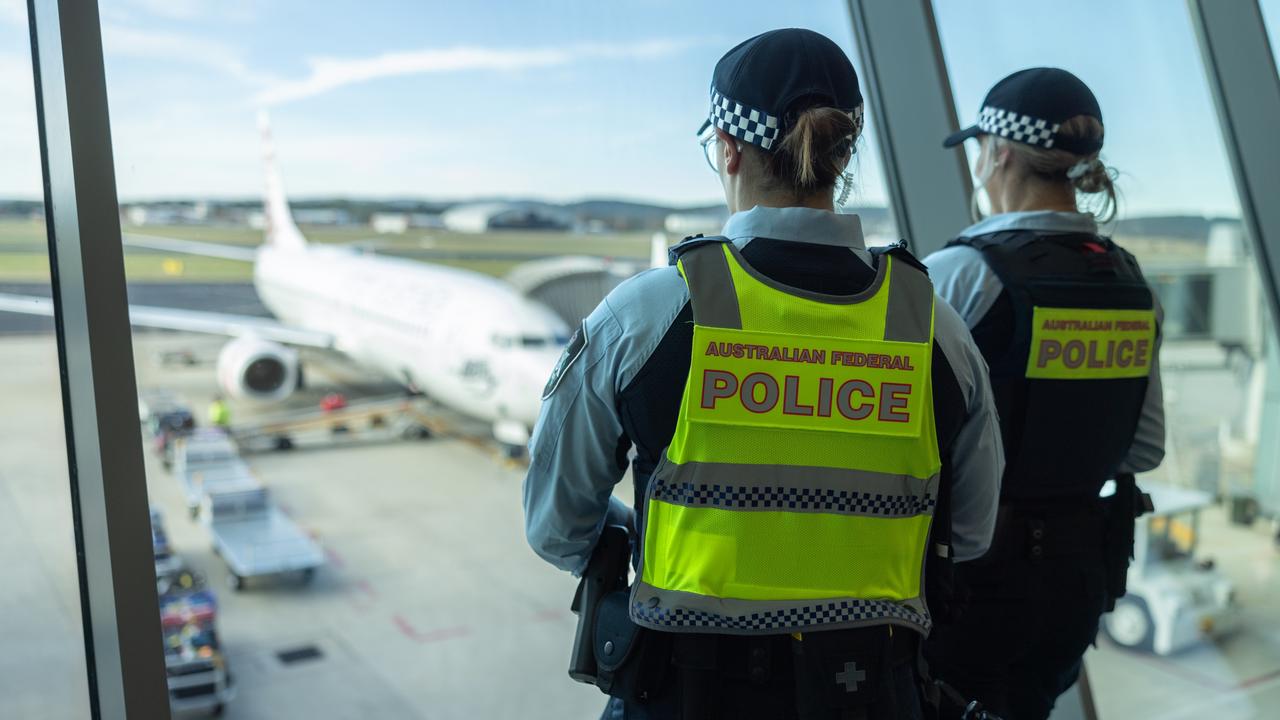Price of fruit, vegetables and meat set to climb because of bushfires and drought
The full impact of the bushfires is yet to be determined but many costs are expected to climb, including those for food. See what groceries are going to cost you more every time you go to the supermarket.

Companies
Don't miss out on the headlines from Companies. Followed categories will be added to My News.
The price of fresh produce is tipped to rise as industries feel the full impact of the bushfires and drought crisis.
Popular produce lines including lettuce, broccoli, cauliflower, apples, honey and nuts are expected to be hit by price rises in the short-term, impacting householders’ hip pockets, industry experts say.
And the quality of goods supplied is likely to be impacted.
The peak industry body for vegetable and potato growers, AUSVEG’s chief executive officer James Whiteside, said the loss of production and disruption to supply chains would be felt by consumers at the checkout.
The exact price hike remains unclear.
“Roads closed means products moving into markets is disrupted and there’s short-term shortages,” he said.
“There is also a significant impact of this relentless heat and dry conditions on products which I think will have a significant impact on fresh food for many months to come.”

Mr Whiteside said in Victoria’s east Gippsland region large masses of vegetables crops would be impacted.
“Lots of spinach and lettuces are grown here and a lot of this product would go to Sydney up the coast road and up the Pacific Highway which is shut,” he said.
“It then has to go up to the Hume Highway which essentially doubles the time which means trucks suddenly become unavailable because the demand for them comes up and drivers are harder to come by.”
The quality of food produce was also likely to be diminished as a result of the fires and drought.
“Meeting high-quality specs has become harder and harder if it’s 43 degrees and you have all sorts of heat damage,” Mr Whiteside said.
The NSW Apiarists’ Association has called for an urgent meeting with the state government to gain assistance for the bee industry, which is in “crisis” following the fires.
Association president Stephen Targett said the fires would have a massive impact on honey and nut production in NSW.
“We have lost thousands of hives, and in a large number of cases the field bees have been killed but the hives have survived,” he said.
“For those hives that have survived, we have lost our autumn and winter food source, particularly in the south of the state.”

Mr Targett said the bee producers were seeking urgent temporary access to unburnt National Parks and State Conservation areas through autumn and winter until there’s substantial regrowth of the forests, which are the bees’ food source.
Meat and Livestock Australia said the loss of life, property and livestock would significantly impact the industry.
A MLA spokesman said 8 per cent of the nation’s cattle herd and 13 per cent of the nation’s sheep flock had been impacted by the natural disasters.
“While the fires may lead to tighter supply and reduced feed in the affected areas and subsequently impact sheep, cattle and feed prices, there are numerous factors that influence these prices, including drought conditions, domestic and global demand, production from overseas competitors and currency movement just to name a few,” he said.
In NSW, more than 6300 head of livestock have been euthanised or confirmed killed in the bushfires this season across the state, according to the NSW Department of Primary Industries.
About 5200 of these have been lost in south east NSW since Christmas alone.
NSW Farmers president James Jackson said the large spend of the bushfires had further depleted pasture and fodder supplies in areas already hit hard by drought.
“Around 9000 farms in NSW have been impacted and on top of all that, many farmers have lost pastures and stored forage and are in urgent need of fodder to help keep animals alive,” he said.
“As always, farmers are out there helping their fellow farmers with fodder donations and community organisations are doing all they can to support everyone. But farmers do require immediate and ongoing assistance to keep livestock alive with water and feed supplies.”
MORE NEWS:
Bushfires should make us rethink our meat eating habits
Barefoot Investor’s bushfire trip to help victims
Sinister plot to steal spies’ DNA

And as for fruit, apple prices will rise and it could take four years before they return to normal after orchards in NSW’s Batlow region were decimated by bushfires.
Apple and Pear Australia chief executive Phil Turnbull said it is the third apple growing region in the country to be decimated by fire in the past month.
“We were already predicting production was going to be down (this year) – this is going to contribute to that but it is too early to tell what the volume decrease will be,” he said.
Batlow supplies Australia with 10 per cent of its apples.
“Losing trees is a significant issue because it takes four to five years, and a lot of expenses in capital to get back into full production,” Mr Turnbull said.
Local grower Greg Mouat’s Batlow Rd orchard north of the town was burned extensively in the fires.
“It is pretty blackened and burnt and butchered … it is not a pretty sight,” he said.
“Undoubtedly, it will impact on our cash flow, just how much that is will depend on what we can salvage.”
He said the region would need ongoing support because the journey back to full production could take years.
“It will certainly take a couple of seasons, I hope the federal government support is not just immediate, but it is ongoing,” he said.
And the Eden woodchip mill and sawmill has been burning for days and it could take between 20 and 30 years to grow before they can be used for paper or building homes.
Originally published as Price of fruit, vegetables and meat set to climb because of bushfires and drought


